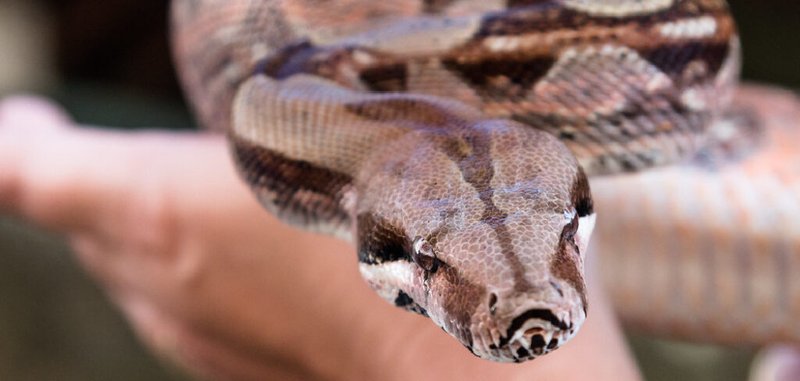
When you think of the boa constrictor, you might picture its striking patterns or the way it moves silently through its environment. But look a little deeper, and you’ll find that this snake is steeped in rich symbolism. Different cultures have woven the boa into their narratives, using it as a representation of life, death, and rebirth. Understanding the symbolism of the boa constrictor helps us grasp how interconnected our understanding of nature and culture can be.
Symbolism in Ancient Cultures
In ancient civilizations, the boa constrictor often represented powerful themes. For the Maya, this serpent was associated with the underworld and the cycle of life and death. Think about it: a creature that can consume its prey whole embodies the idea of transformation. In their mythology, the boa wasn’t just a predator; it was a symbol of life’s cyclical nature.
Similarly, in Indigenous cultures of South America, the boa constrictor is seen as a guardian of the forest. It’s revered as a being that maintains the balance of nature. When you wander through the Amazon, you might be reminded of those stories when you see one of these remarkable creatures basking in the sunlight, embodying both beauty and danger.
Yet, not all representations of the boa are rooted in respect. In some cultures, its constricting nature is feared, often symbolizing death or malevolence. This duality creates a richer tapestry of cultural meanings, exploring both reverence and fear.
Mythological Significance of the Boa Constrictor
In many myths, the boa constrictor appears as a powerful force, often involved in creation stories. For example, in Amazonian mythology, a great boa is said to have created rivers and mountains through its movements. These tales illustrate how the boa is not just a passive element of the environment but an active shaper of the world around it.
You might be wondering how these stories translate to our understanding today. The boa constrictor serves as a reminder of humankind’s connection to nature. Seeing a boa in a myth often symbolizes the respect we should have for the environment—a cautionary tale, if you will.
Furthermore, in African cultures, the boa often appears in stories that convey lessons about wisdom and patience. Consider tales where the boa uses its cunning to outsmart other creatures, highlighting the value of cleverness over brute strength. These stories continue to influence how many view snakes, blurring the lines between fear and admiration.
The Boa Constrictor in Art and Literature
Art and literature have long celebrated the boa constrictor, showcasing its rich symbolism. From paintings to poetry, artists have captured the snake’s beauty and mystery. You could think of the famous painting “The Dream” by Henri Rousseau, which features a lush jungle with a boa throughout the scene. It emphasizes the allure of the exotic and the wild, inviting viewers to explore themes of nature and fantasy.
In literature, the boa constrictor appears in works that discuss themes like survival and dominance. In many stories, the snake acts as a metaphor for challenges that characters must face, embodying their internal struggles. For instance, in “The Little Prince” by Antoine de Saint-Exupéry, the boa symbolizes the complexity of human nature, as it digestively consumes challenges, representing growth and change.
You might find it fascinating how different authors and artists interpret the boa constrictor’s essence—each time adding another layer to its already rich symbolism.
Boa Constrictor in Modern Culture
In contemporary culture, the boa constrictor still captivates our imagination. You can see it in movies, television shows, and even fashion. Think about how often snakes are used in styles and patterns. They evoke a sense of intrigue and often represent strength, seduction, or danger.
In popular shows like “Anaconda,” the boa is portrayed as both a threat and a marvel of nature. These portrayals can amplify public interest in snakes and their ecological importance. It reminds us that the boa constrictor isn’t just a creature to fear; it’s a vital part of our ecosystem that helps control populations of other animals and contributes to biodiversity.
Moreover, conservation efforts often use the boa constrictor as a focal point. You might come across campaigns highlighting the importance of preserving their habitats, recognizing that protecting the boa also means safeguarding the delicate balance of their ecosystems.
Learning from the Boa Constrictor’s Symbolism
Understanding the symbolism of the boa constrictor can teach us valuable lessons in life. First, it reminds us of the importance of balance—both in nature and our daily lives. Just as the boa plays a role in its ecosystem, we too have responsibilities to the environment and those around us.
Additionally, the dual nature of the boa can symbolize our personal struggles. It challenges us to confront our fears and embrace change. Like the boa that sheds its skin, we have the opportunity to transform and grow. This idea resonates with many people, encouraging self-reflection and personal development.
When you think about it, the boa constrictor represents not just a creature but also an essential lesson in resilience and adaptability. Each time you encounter a story or image of this magnificent snake, you can take a moment to appreciate the wisdom it represents, both culturally and personally.
The boa constrictor has woven its way through human history, carrying rich symbolism across cultures. From ancient myths to modern art, this snake embodies themes of creation, transformation, and balance. It serves as a reminder of our connection to nature and the significance of respecting the world around us.
So, the next time you hear about a boa constrictor, think about the many stories it holds. This majestic creature is more than a predator; it’s a symbol of wisdom, strength, and the intricate interconnections that define our lives. Embracing these meanings can deepen our appreciation for both the animal and the natural world it inhabits. Just like those campfire stories, the legacy of the boa constrictor continues to inspire and teach us.
